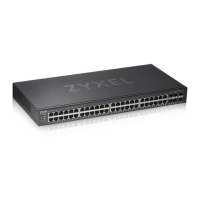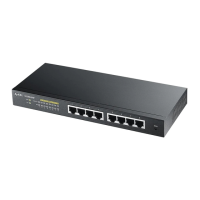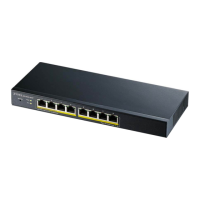Chapter 36 Layer 2 Protocol Tunneling
GS1920v2 Series User’s Guide
212
Figure 143 SWITCHING > Layer 2 Protocol Tunneling
The following table describes the labels in this screen.
Table 101 SWITCHING > Layer 2 Protocol Tunneling
LABEL DESCRIPTION
Active Enable the switch button to enable layer 2 protocol tunneling on the Switch.
Destination
MAC Address
Specify a MAC address with which the Switch uses to encapsulate the layer 2 protocol packets
by replacing the destination MAC address in the packets.
Note: The MAC address can be either a unicast MAC address or multicast MAC
address. If you use a unicast MAC address, make sure the MAC address does
not exist in the address table of a switch on the service provider’s network.
Note: All the edge switches in the service provider’s network should be set to use the
same MAC address for encapsulation.
Port This field displays the port number. * means all ports.
* Use this row to make the setting the same for all ports. Use this row first and then make
adjustments on a port-by-port basis.
Note: Changes in this row are copied to all the ports as soon as you make them.
CDP Select this option to have the Switch tunnel CDP (Cisco Discovery Protocol) packets so that
other Cisco devices can be discovered through the service provider’s network.
STP Select this option to have the Switch tunnel STP (Spanning Tree Protocol) packets so that STP can
run properly across the service provider’s network and spanning trees can be set up based on
bridge information from all (local and remote) networks.
VTP Select this option to have the Switch tunnel VTP (VLAN Trunking Protocol) packets so that all
customer switches can use consistent VLAN configuration through the service provider’s
network.

